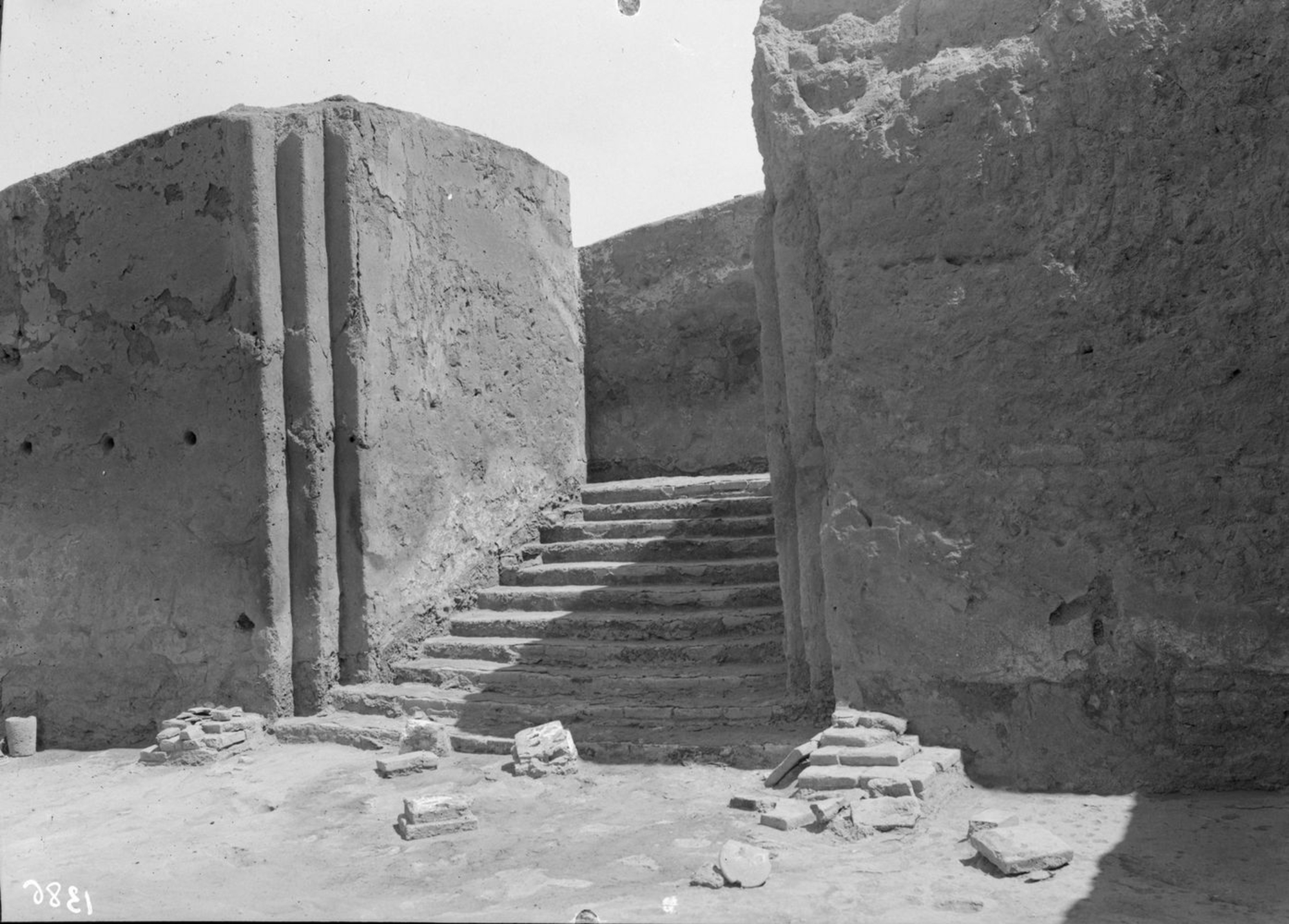
- Home
- The Great royal palace of Mari
- Discovery and excavation
The excavation of the palace began in 1935, during the second campaign, and continued until 1938. Archaeologists uncovered a large section of the palace plan.
Different areas of the palace were then excavated by André Parrot from 1964, in the religious and shop sectors, and in the south-east corner of court 131. Jean-Claude Margueron completed the excavations of the palace from 1979, in the northern part of court 131, in the entrance sector, the official apartments (spaces 106, 64 and 65) and, on a more ad-hoc basis, the west wing. Their work provided a rare insight into the site.
A city within the city
In its ultimate state, the building occupied some two hectares of the city's surface area, making it by far its most impressive monument. Its mass and height would have completely dominated the city. André Parrot counted some 300 rooms and courts. By adding the spaces not excavated and all the rooms on the first floor, it was double this size, with at least 500 to 600 rooms and four hectares of floor space. It was a city within the city. The fact that more than half of the habitable surface area of the palace has not been found – that is, the upper floor and the unfinished ground excavation – makes it difficult to analyse the building. However, there are enough remains and clues for it to be reconstructed in a logical and intelligible manner.
Evidence of palace life in the early 2nd millennium BCE
The palace – destroyed, looted and burnt down by the troops ofHammurabi of Babylon in 1760 BCE – revealed objects attesting to daily and artistic activities highly representative of life in a palace dating from the early 2nd millennium. The cylinder seals and seal stamps of the administrators and above all some 15,000 complete and fragmentary tablets, constituting an outstanding collection of daily administrative texts and royal correspondence, provide an account of the kingdom’s final years. Several statues and statuettes of royal and divine figures are among some of the most beautiful works of the Amorite period, such as the goddess of the gushing waters. There were also bronze tools and weapons and ceramic ware, as well as a fine collection of cake moulds.
Partners and authors
Associated media
Open Media Library

Palace of Mari

Excavation of the statue of Ishtup-Ilum. Mari

General view of Court 106

Excavation of the head of the goddess of the gushing waters

Excavating an artefact. Mari excavation.

Palace of Mari

Palace throne room

